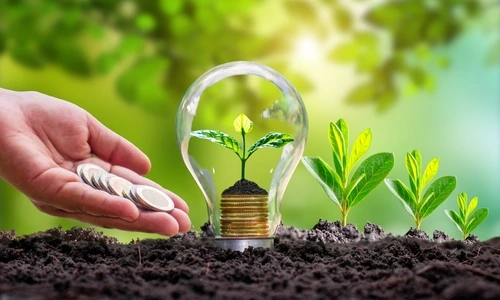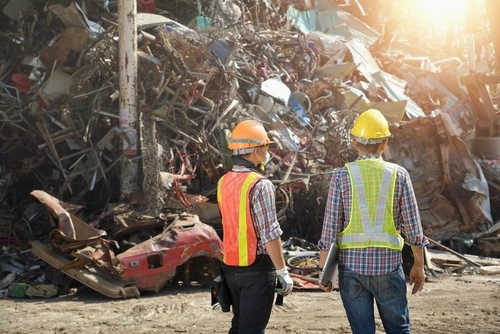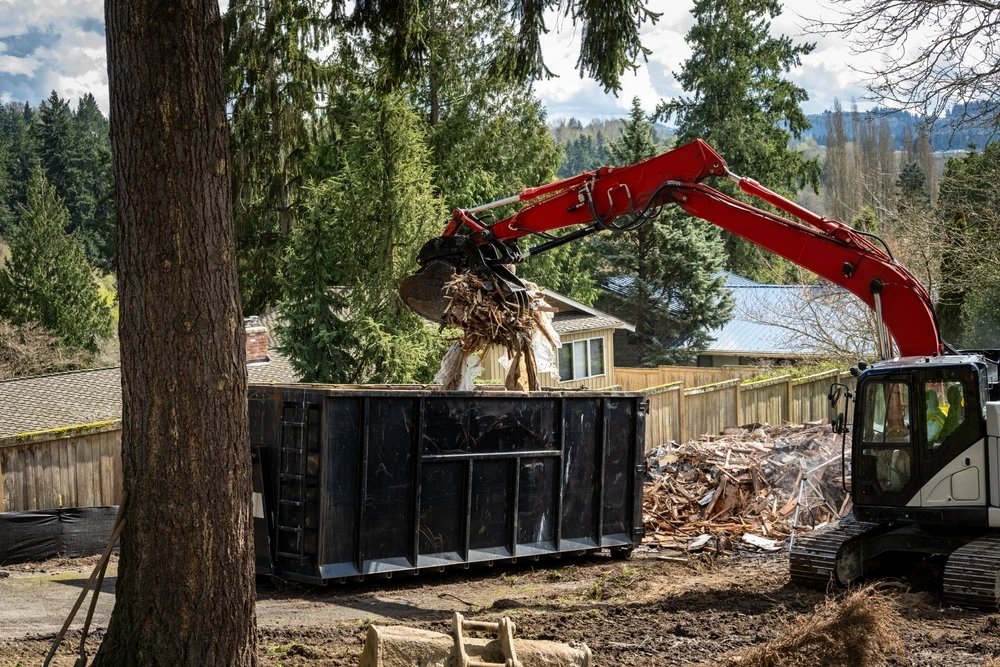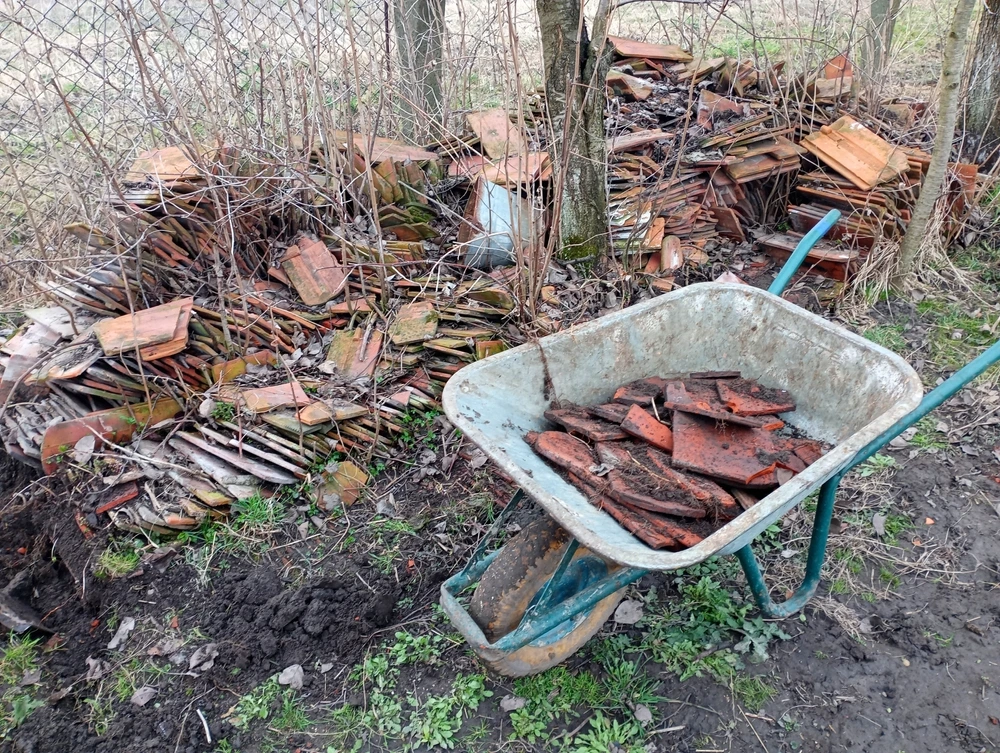If you’re engaged in the construction and demolition (C&D) industry, the Construction and Demolition Recycling Association (CDRA) is an essential resource you can’t afford to overlook. CDRA is dedicated to promoting and defending environmentally sound recycling practices for over 500 million tons of recoverable construction and demolition materials. Their programs and advocacy efforts have significantly influenced sustainable practices within the industry.
Membership in CDRA comes with numerous advantages including access to industry events, educational resources, and the opportunity to collaborate with like-minded professionals. For instance, from July 1 to September 30, new members can take advantage of a special half-rate membership offer, making it more accessible than ever to join the community.
Participation in CDRA helps you stay ahead of technological advancements and industry standards, contributing to both your professional growth and environmental sustainability. Additionally, CDRA organizes the C&D World annual conference, which serves as a hub for the latest innovations and shared knowledge in the field.
 Several materials play significant roles in construction and demolition (C&D) recycling, particularly concrete, asphalt, wood, and gypsum. Each of these materials presents specific advantages and challenges in recycling processes.
Several materials play significant roles in construction and demolition (C&D) recycling, particularly concrete, asphalt, wood, and gypsum. Each of these materials presents specific advantages and challenges in recycling processes.
 The Construction and Demolition Recycling Association (CDRA) focuses on promoting sustainable practices and significantly reducing emissions linked to the construction and demolition sector. The association’s initiatives lead to meaningful changes in the industry and environment.
The Construction and Demolition Recycling Association (CDRA) focuses on promoting sustainable practices and significantly reducing emissions linked to the construction and demolition sector. The association’s initiatives lead to meaningful changes in the industry and environment.
 Comprehensive Move-Out Cleaning Checklist: Essential Steps for a Spotless Exit
Comprehensive Move-Out Cleaning Checklist: Essential Steps for a Spotless Exit
Date: September 16 ,2024
Key Takeaways
- CDRA advocates for sustainable recycling of construction and demolition materials.
- Membership offers education, networking, and special rates.
- CDRA hosts events like the C&D World conference.
Understanding CDRA and Its Mission
The Construction and Demolition Recycling Association (CDRA) plays a pivotal role in promoting and defending the recycling of construction and demolition materials in an environmentally sound manner. Addressing its evolution, and the goals and objectives helps illustrate its significant impact and mission.Evolution of CDRA
The CDRA has undergone notable transformations since its inception. Originally founded to address the growing need for recycling in the construction and demolition industry, the association has expanded its reach and influence over the years. Today, the CDRA represents a network of members committed to advancing recycling practices. Through initiatives and conferences such as the annual C&D World, the association facilitates collaboration among industry professionals. This collaboration drives innovation and encourages the adoption of best practices, ensuring that the industry continues to evolve.Goals and Objectives
The primary goals of the CDRA include promoting environmentally sound recycling and enhancing the policies associated with it. One key objective is to increase the recycling rate of materials such as concrete, asphalt, and wood. Achieving a high recycling rate helps reduce the need for landfill space and minimizes environmental impact. The association also works to influence legislation and public policy to support recycling efforts. Through advocacy and educational initiatives, the CDRA aims to drive industry standards and improve compliance among its members. By promoting a sustainable future, the CDRA plays a crucial role in the broader movement towards environmental stewardship. Explore more about these objectives on the official CDRA website.Membership Benefits Within CDRA
As a member of the Construction and Demolition Recycling Association (CDRA), you gain access to a wealth of resources and opportunities designed to enhance your business operations and professional growth. Key benefits include networking opportunities and avenues for collaboration and innovation.Networking Opportunities
Joining CDRA connects you with a diverse range of professionals from the construction and demolition recycling industry. You can network with recyclers, processors, haulers, and even industry partners such as general contractors and demolition experts. Members often participate in C&D World events, which bring together top minds to discuss industry trends, challenges, and innovations. These events also offer workshops, seminars, and panel discussions that can significantly broaden your professional network. Social events and local meetups provide informal settings where you can build relationships, share experiences, and explore collaborative projects. This networking is invaluable for staying updated on industry standards and best practices.Collaboration and Innovation
CDRA actively fosters an environment that promotes collaboration and innovation among its members. By joining the association, you are part of a community that shares the mission of promoting environmentally sound recycling practices. Members collaborate on research projects aimed at improving recycling technologies and methodologies. This collective effort often leads to significant advancements in the industry, benefiting all participants. The organization facilitates various initiatives, including advocacy programs and legislative efforts, aimed at supporting the recycling business. By working together, members can influence policies and regulations that impact their operations, making it easier to implement innovative recycling solutions. CDRA provides a platform for members to share ideas, research findings, and success stories, all aimed at driving the industry forward.Key Materials in C&D Recycling
 Several materials play significant roles in construction and demolition (C&D) recycling, particularly concrete, asphalt, wood, and gypsum. Each of these materials presents specific advantages and challenges in recycling processes.
Several materials play significant roles in construction and demolition (C&D) recycling, particularly concrete, asphalt, wood, and gypsum. Each of these materials presents specific advantages and challenges in recycling processes.
Concrete and Asphalt Recycling
Concrete and asphalt are two of the most commonly recycled C&D materials. Recycled concrete is often used for road base, aggregate for new concrete, and erosion control. The process involves crushing the concrete into smaller pieces, removing any steel rebar, and then processing it to the desired size. Asphalt recycling entails grinding the old asphalt into a reusable form. This material can then be mixed with new asphalt, reducing the need for fresh aggregate and asphalt binder. Recycling these materials helps reduce environmental impact and is often cost-effective for construction projects.Wood and Gypsum Recovery
Wood is another significant material in C&D recycling. Reclaimed wood can be repurposed for new construction, furniture making, or as biomass fuel. The recovery process involves sorting, cleaning, and sometimes treating the wood to remove contaminants like nails and adhesives. Gypsum, commonly found in drywall, can also be recovered and reused. Recycled gypsum is utilized in new drywall, cement production, and as a soil amendment. The recovery process involves crushing the drywall and separating the paper from the gypsum core. This promotes sustainability and reduces the need for gypsum mining.Technological Advancements in C&D Recycling
Technological innovations in Construction and Demolition (C&D) recycling play a critical role in enhancing operational efficiency and sustainability. Key advancements encompass both physical equipment and sophisticated software tools designed to streamline recycling processes.Equipment and Machinery
Modern equipment and machinery are transforming the way C&D recycling facilities operate. Autonomous sorting systems utilize advanced sensors and robotics to segregate materials like metals, wood, and concrete with high precision. These technologies reduce manual labor and increase sorting accuracy. Portable crushers and screeners have also become vital. These machines can be transported to demolition sites, reducing the need for transporting debris to a central facility. This not only saves on transportation costs but also minimizes environmental impact. Innovations in material recovery facilities (MRFs) now include AI-driven systems that can identify and sort a broader range of materials, improving throughput and recovery rates. For example, adaptive reuse markets can integrate these innovations to repurpose materials more efficiently, thus contributing to larger sustainability goals.Software Tools for Efficient Recycling
Software tools are equally pivotal in optimizing C&D recycling. Platforms like One-Click LCA provide life cycle assessments that help companies measure and reduce the environmental impact of their projects. This decarbonization platform calculates the carbon footprint of building materials, aiding in more sustainable decision-making. Real-time data analytics software offers insights into operational metrics such as material inflow and outflow, waste composition, and recycling rates. These tools enable you to make informed adjustments to processes, improving efficiency. Project management software designed specifically for C&D recycling can help track compliance with regulations, manage logistics, and** schedule equipment maintenance**, ensuring smoother operations. Integration of these tools with existing systems can significantly enhance coordination and productivity across the recycling chain, from initial collection to final processing. These advancements collectively promote more sustainable and efficient practices in C&D recycling, fostering a more eco-friendly industry.Advocacy and Environmental Impact
 The Construction and Demolition Recycling Association (CDRA) focuses on promoting sustainable practices and significantly reducing emissions linked to the construction and demolition sector. The association’s initiatives lead to meaningful changes in the industry and environment.
The Construction and Demolition Recycling Association (CDRA) focuses on promoting sustainable practices and significantly reducing emissions linked to the construction and demolition sector. The association’s initiatives lead to meaningful changes in the industry and environment.
Promoting Environmentally Sound Practices
The CDRA advocates for recycling and reusing materials from construction and demolition projects. By doing so, it helps divert significant amounts of waste from landfills. You can see benefits through policies they promote, such as using salvaged items instead of new materials. This reduces the demand for raw materials and decreases the environmental footprint. Additionally, they support the use of EPA funding to bolster recycling programs. Educational outreach and annual events such as C&D World facilitate industry-wide adoption of green practices. These efforts underscore consistent dedication to fostering sustainable methods within the field.Impact on Emissions and Climate Change
Recycling construction and demolition (C&D) materials drastically reduces greenhouse gas emissions. As reported, C&D recycling has avoided occupying over 4,300 acres of landfill space and saved substantial amounts of energy. The reduction in material processing through recycling means fewer emissions. Moreover, recycling materials like bulk aggregate and RAP significantly lower CO₂ emissions during production. Such practices have solid implications for combating climate change. The focus also includes using eco-friendly demolition processes and emphasizing the emissions savings associated with recycled materials. Promoting these practices contributes to a visible and measurable reduction in the construction industry’s climate impact.Industry Events and Educational Resources
You have access to an array of events and educational materials that are crucial for staying informed and competitive in the construction and demolition recycling industry. These resources provide invaluable knowledge, industry updates, and networking opportunities.Annual Conferences and Exhibitions
Attending annual conferences and exhibitions such as C&D World is vital for anyone involved in the construction and demolition recycling industry. Held in Dallas, TX, C&D World offers a three-day event where you can learn about the latest advancements, tools, and techniques in the field. The event is a rendezvous point for industry professionals to network, share experiences, and collaborate on new ideas to move the industry forward. To participate, visit the Construction and Demolition Recycling Association for more details and registration options.Educational Materials and Publications
Access to high-quality educational materials and publications aids your professional growth significantly. For example, the Demolition Association provides a variety of resources including white papers, industry updates, and webinars. Membership in these organizations often comes with additional benefits, such as discounts on products and services, and exclusive content tailored to your needs. Additionally, CDRecycler.com offers insightful articles on recycling materials generated from construction and demolition, providing a wealth of knowledge to professionals dedicated to preserving landfill space and finite resources. These materials help you stay updated and improve your operational efficiency.Frequently Asked Questions
Explore common questions about membership, benefits, research, and environmental impacts related to the Construction and Demolition Recycling Association.How can I become a member of the association focused on construction and demolition recycling?
You can become a member by visiting the membership page on the CDRA’s official website. Membership options cater to various levels of engagement and business sizes.What are the benefits of joining the organization dedicated to recycling in construction and demolition?
Membership in the CDRA offers networking opportunities, access to industry research, and participation in events like the C&D World Conference. Members can also influence policy and stay updated on regulatory changes.Where can I find the latest research and trends in construction and demolition waste recycling?
The CDRA website is a valuable resource for up-to-date research and trends. The annual C&D World Conference is another key venue for learning about industry advancements.Which types of construction materials are eligible for recycling?
Recyclable construction materials include concrete, gypsum drywall, asphalt pavement, wood, and shingles. For a more comprehensive list, visit the about section on the CDRA website.How should construction debris be handled and disposed of legally and responsibly?
You should adhere to local and federal regulations, which often involve sorting materials and taking them to designated recycling facilities. Information on legal compliance can be found through resources offered by the CDRA.What are the environmental benefits of recycling materials from construction and demolition projects?
Recycling reduces landfill use, conserves natural resources, and lowers greenhouse gas emissions. The CDRA promotes these benefits and provides detailed information on their website.RECENT BLOGS
 Comprehensive Move-Out Cleaning Checklist: Essential Steps for a Spotless Exit
Comprehensive Move-Out Cleaning Checklist: Essential Steps for a Spotless Exit
Date: September 16 ,2024
Our Reviews
Mark Ramick
1725926374
Amber was awesome in helping me schedule the right dumpster for my job. Thanks again
Brian Healy
1725553543
Heather was so very pleasant, informative and charming. Next time… I will use you again.
Brandi Childers
1724853716
Ricardo helped me with my reservation. He made everything super clear and answered all my questions to help me pick the right dumpster to rent!
Steven Hewett
1724785537
Heather made the sales and scheduling experience extremely easy. Thank you for having great employees that care about conducting great business.
Jackson Vandiver
1724703158
Great service and fantastic customer service department. I would use them again.





